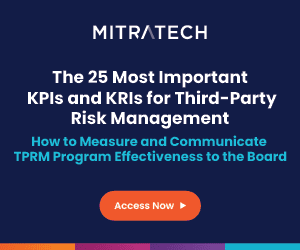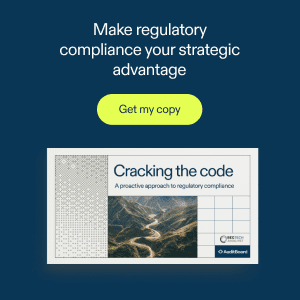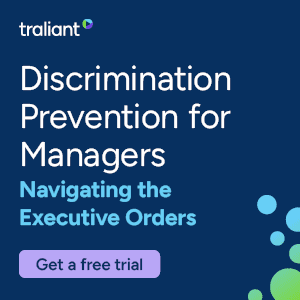The pandemic has changed the way most companies are onboarding new hires, presenting compliance managers with new challenges to face. True Office Learning’s Harper Wells explores what compliance programs can do to effectively train new (and often remote) workers.
The first days of a new job can be exciting, optimistic and a little nerve-wracking, but they also offer a chance to learn the fundamentals needed to become a successful employee.
In 2020, the first days on the job are probably something else: weird. The COVID-19 pandemic has turned most businesses’ operations upside-down — and employee onboarding is no exception. Instead of coming into work on the first day bubbling with enthusiasm, new employees might be logging onto Zoom from their kitchen table.
Compliance training remains an important element of onboarding, and it requires a reimagined strategy. New risks have emerged, and remote employees may find themselves more on their own if a problem arises. Onboarding hasn’t diminished just because workers aren’t coming into the office — in fact, it might be more vital than ever.
The New Challenges of Onboarding
Because COVID-19 forced so many companies to go remote, new employees are losing out on the onboarding experience. Whether hires find onboarding rewarding or tedious, it still is a process that is usually necessary, especially if a compliance component is attached. The pandemic has upended onboarding in several ways, including:
- Many organizations weren’t equipped to handle virtual onboarding, including forms that needed to be digitized, videos that needed to be put online and virtual meetings with supervisors that were too difficult to schedule.
- Multiple departments may be involved with onboarding, and with everyone at home, collaboration and coordination aren’t as efficient.
- New hires aren’t able to easily ask questions or get answers. They can’t simply go down the hall and knock on a door for help, and they might be apprehensive to virtually approach someone they’ve never met in person.
From a compliance and training standpoint, the challenge reaches far deeper with a new range of risks that onboarding needs to cover.
Evolving Risk
Compliance risk with remote workers isn’t necessarily new; practitioners have been dealing with home- and field-based employees for years. However, the sheer volume of remote work necessitated by the pandemic has brought a new level of risk, with concerns such as:
- How do you monitor ethical conduct in a fully or partially remote environment?
- Are there areas where processes have changed, like expense pre-approvals and interactions with third parties and supply chains — especially changes in due diligence requirements for third-party vendors?
- How do employees correctly and safely dispose of sensitive documents, like nonpublic company information, if they don’t have a secure shred bin in their home office?
- How do employees ensure data privacy on their personal devices and via their home networks, including for others’ personally identifiable information (PII) and personal health information (PHI)?
- What can managers say — and not say — if an employee is sick with COVID-19?
- With employees who are at least occasionally in the office and/or interacting in person with customers, what are the policies regarding masks? If an employee is sick or exposed to someone with the virus, what’s the appropriate procedure? What are the consequences for not following these policies?
Of course, these concerns apply to every employee, new or existing. With new hires, however, the stakes are a little higher, because this evolving compliance knowledge must be delivered along with everything else presented during onboarding.
Compliance Onboarding for the Remote Worker
Compliance teams must adjust their training approach within onboarding to reflect new risk and remote realities. These five best practices help make the changes effective and relatively painless:
1. Continue to Emphasize the Code of Conduct
An organization’s code of conduct should be a values-based resource that guides behavior, culture and policy. New employees need to have an understanding of who the company is as an organization, as well as a related expectation of appropriate behavior. Training to understand the code should remain an onboarding priority and be updated to include any changes in protocols resulting from the pandemic and subsequent work-from-home policies. Moreover, the code of conduct should be available in a digital format so that, after onboarding, it can be accessed anywhere, anytime.
2. Incorporate Shifting Risks into New Hire Training
As already discussed, risks have shifted in our new normal — and compliance training topics should be prioritized to account for this changed environment during onboarding. Take the time to update training plans and modules to focus more on the unique circumstances remote employees now face in their day-to-day work.
The current business environment is also reinforcing the unique nature of each employee’s role. A one-size-fits-all onboarding process — particularly with compliance training — may not deliver an optimal experience for every hire. Employees may need to receive additional targeted information based on their role, including managers and those engaging in high-risk activities.
3. Move From a “Transactional” Experience Toward an “Ecosystem” Approach
Stop thinking of onboarding as a one-time, check-the-box experience. Frame employees’ first training experience as part of an ecosystem where they are learning and engaging year-round. Think about the tools and resources newer employees may need as they settle in. This can be in a variety of modalities and issued over time, from email communications on policy to task-based job aids they can reference in their day-to-day. Approaching compliance training from this lens also scales to your existing employees, especially with populations that work in higher-risk activities, like engaging with third parties and handling PII or nonpublic company information.
4. Collaborate with Other Departments
Virtual onboarding is likely challenging other departments involved in the process as well – especially HR, which previously may have relied on in-person activities to get a new employee up to speed. Without some sort of collaboration with other departments, the amount of work that hires need to complete onboarding and the amount of communication flying around can become overwhelming. By the time someone gets to the compliance training during onboarding, they might be spent.
To avoid this, understand the onboarding goals of other departments and work with those groups to effectively and seamlessly include compliance training within the process. Such collaboration keeps new employees engaged throughout the process, uncovers any gaps while preventing messaging duplication and enables compliance teams to focus on what happens after onboarding.
5. Show Empathy and Provide Resources
Employees have been dealing with so much throughout the pandemic, both professionally and personally. The pressure on new hires might be even greater in the current economic environment. For example, someone may see noncompliant behavior but be afraid to speak up because they’re afraid of losing their job at a time when unemployment is high and opportunities are few.
Meeting employees where they’re at and providing resources to help them navigate compliance requirements (particularly role-based compliance requirements) will lead to them making informed decisions rather than emotional judgments. If someone has a compliance question, ensure there is a way to get it answered quickly and expertly. Show employees you know how stressful the COVID-19 world and workplace can be, and show them you’re here to help.
A Pivot, But Also an Opportunity
The undeniable impact of COVID-19 on the American workplace will probably last years, even after things get back to “normal” and it’s relatively safe for employees to return to the office (which doesn’t appear to be happening anytime soon). Companies may discover that a remote workforce is a more economical option — this is already starting to happen — or that virtual onboarding makes more sense than traditional onboarding.
In this way, revamping onboarding and virtual training offers an opportunity to shape and improve compliance processes in the future. Is the three-hour video that HR shows really the best way to onboard an employee? Does handing new hires a thick binder containing the organization’s code of conduct effectively set expectations? If the previous normal wasn’t working, pandemic-driven changes can become the new normal — even when the pandemic finally ends.
A fresher e-learning approach awaits organizations that react to the short-term crisis with a long-term compliance plan. Instead of thinking about compliance training during onboarding as a one-time event, make it part of an ecosystem in which employees are learning and engaging all year. That will drive the culture of compliance that is proving to be so important in the current business environment.



 Harper Wells is Director of Compliance Insights and Strategy with
Harper Wells is Director of Compliance Insights and Strategy with 








